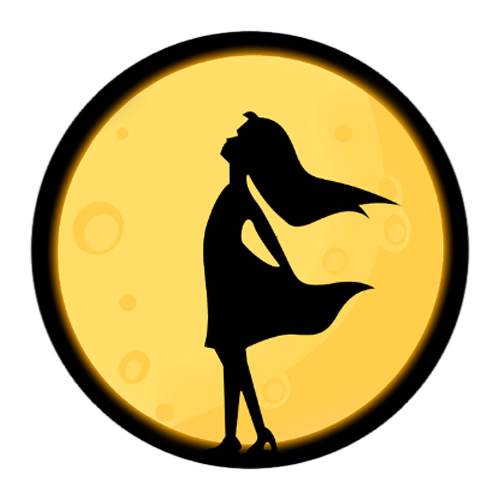Deep-Sky Astrophotography During a Full Moon
- Katherine Miller
- Jun 28
- 4 min read
How to Get Your Fix of Faint Fuzzies When the Moon’s Stealing the Show

Let’s not sugar-coat it, capturing deep-sky objects during a full Moon is challenging. It's like trying to spot a candle in front of a stadium floodlight. It’s SO bright! Most of us usually wave the white flag, grab a beer, and go back to stacking data from darker nights.
But here’s the thing... You can still capture some cracking shots, even when Luna is in her full, overexposed glory — if you’re smart about it.
Why the Full Moon Is a Pain in the Sensor
During a full Moon, the sky background becomes a wall of light. That makes it hard to capture the fine details and contrast we love in faint nebulae and galaxies. Your signal-to-noise ratio tanks, and your subframes end up looking as if they've been soaked in milk.
So what's the trick? You change your game plan.
What to Shoot (and How to Survive)
Go Bright or Go Home
This is not the time to chase ghostly galaxies or ultra-faint Bok globules. Save those for the new Moon. Instead, go after the stuff that can handle a bit of light pollution:
Planetary Nebulae – These babies are small but mighty.
Open Clusters – Full Moon? They don’t care.
Globular Clusters – can be absolute beasts in brightness.
Emission Nebulae – If you’ve got narrowband filters.
Bright deep-sky targets suitable for full moon nights:
Southern Hemisphere
Carina Nebula (NGC 3372): A vast emission nebula rich in star-forming regions.
Omega Centauri (NGC 5139): The largest known globular cluster, visible to the naked eye under dark skies.
Jewel Box Cluster (NGC 4755): A compact open cluster near the Southern Cross, notable for its colorful stars.
Northern Hemisphere
Orion Nebula (M42): A bright emission nebula, ideal for beginners because of its luminosity.
Pleiades (M45): An open star cluster with a distinctive blue reflection nebula.
Andromeda Galaxy (M31): The closest spiral galaxy to the Milky Way, visible even under moderate light pollution.
Narrowband Filters = Your Best Mates
If you shoot mono (and I know a lot of you do), narrowband filters are the ultimate Moon countermeasure. With 3nm or 5nm Ha, OIII, and SII filters, you can isolate specific wavelengths and cut through the Moon's light like a lightsaber through warm butter.
Ha (Hydrogen-alpha) is especially resilient under moonlight. Load it up and go long on integration time. OIII tends to suffer a bit more, especially if the Moon is nearby. Position matters.
If you're shooting with a colour camera (OSC), a dual or triband narrowband filter like the L-eXtreme, L-eNhance, or Antlia ALP-T can help claw back some contrast.
If you want to learn more about filters, check out my Ultimate Guide to Filters for Astronomy Cameras.
Using a DSLR: Camera Settings for Full Moon Conditions
Capturing deep-sky objects under a full Moon requires careful adjustment of your camera settings to mitigate the increased sky brightness:
Shutter Speed: For bright targets, start with exposures around 30 seconds. However, if you're not using a tracking mount, apply the "500 Rule" to avoid star trails: divide 500 by your lens's focal length to get the maximum exposure time in seconds.
Aperture: Use the widest aperture your lens allows (e.g., f/2.8) to gather more light.
ISO: Begin with ISO 800 and adjust as needed. Higher ISOs can help capture faint details but may introduce more noise.
White Balance: Set to daylight or manually adjust during post-processing to correct any color casts introduced by moonlight.
Watch Your Target Location
Keep your target as far away from the Moon as possible. The more angular separation, the less scattered moonlight you'll have to deal with. Think of it like photographing a candle — just don’t do it next to a floodlight. Use planetarium software (Stellarium, SkySafari, NINA) to check where the Moon is and plan accordingly. If it’s rising in the east, go west. If it’s overhead… maybe go grab a snack.
Moonrise and Moonset Timings
Understanding the Moon's schedule is crucial for planning your astrophotography sessions:
Moonrise: On the night of a full Moon, it typically rises around sunset. Each subsequent night, the Moon rises approximately 30 to 70 minutes later.
Optimal Imaging Window: Aim to photograph deep-sky objects when the Moon is below the horizon or during its later rise times in the days following the full Moon. This provides a darker sky window for capturing faint details.
Stack Like Your Life Depends on It
Moonlight = noise. So the cure is more data. Stack longer, go deep, and don’t be afraid to throw out the worst subs. Dithering, proper calibration frames, and local normalization will all help fight that murky background. And be a little aggressive in post-processing — background extraction and noise reduction are your besties tonight.
Bonus Tip: Moonlight Makes a Great Excuse
If all else fails, just image the Moon itself. Honestly, with the right setup, it’s a stunning subject — full of contrast, craters, and texture. Slap on a barlow, take a break from long integrations, and capture something big and bold for a change. Also… no one's judging if you just want to have a beer and enjoy the night sky. You've earned it.
Final Thoughts
Is a full Moon ideal for deep-sky? Hell no. But it’s not the end of the world either. With the right targets, smart planning, and a bit of narrowband magic, you can still make the most of your night. Don't let a bit of lunar glare keep you out of the game.
Now go on — get out there and shoot something. Clear skies!
